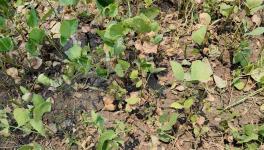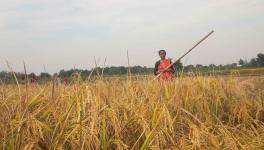COVID-19 Worsened Already Precarious Condition of MFP Collectors in MP
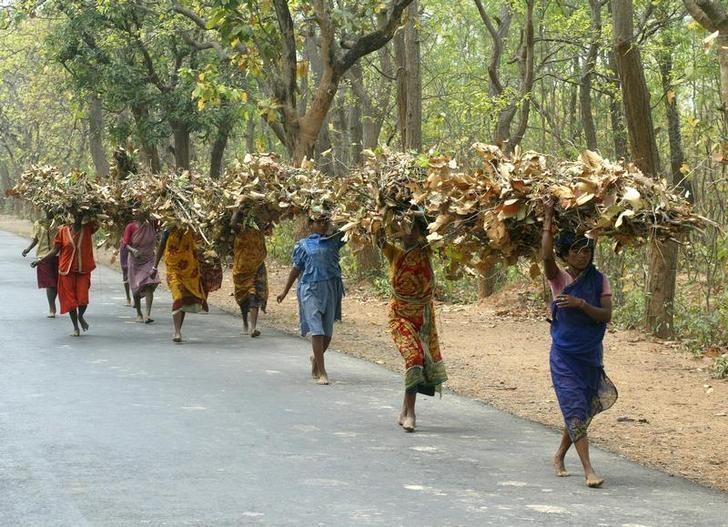
Image Courtesy: Counterview.Org
The poor and vulnerable sections of Indian society have had to suffer severely by the health crisis and lockdowns imposed to curb the spread of COVID-19.
Among the worst affected are the indigenous population living in and around forests in India. One of the biggest sources of their annual income – collection and sale of minor forest produce (MFP) – has been hit by the lockdowns imposed by the national and state governments both in 2020 and 2021. The four-month period between March to June is the time when most of the MFP are collected and traded.
Taking into consideration the unprecedented circumstances caused by the COVID-19 pandemic, the Ministry of Tribal Affairs along with the states drafted and issued a joint strategy under a revised MSP for MFP guidelines on May 1, 2020.
The MSP for MFP were increased by up to 90%. The Ministry also recommended an addition of 23 new items under the MSP for MFP list. The new items included agricultural and horticultural produce collected by tribal gatherers. Despite these efforts, in reports from last year, government officials admitted that the trade in MFP was undoubtedly down by 30-40% in comparison with the previous year and that an assessment of the impact of lockdown on the tribal economy will take time.
The MFP economy supports a significant portion of rural population India, a large part of which is constituted by the indigenous population. According to estimates, collection and marketing of MFP form a source of livelihood for around 100 million people in India.
Recent figures from the Tribal Co-operative Marketing Federation of India Limited (TRIFED) estimated the trade value for 55 prominent MFPs at approximately Rs. 20,000 crore. TRIFED is a national level cooperative body which works towards marketing and development of tribal products.
Despite accounting for a large economy, the annual incomes accruing to individual collectors from selling MFP are very low. This is established by the data on annual collections and earnings of MFP collectors from some villages in Madhya Pradesh (MP) presented later in this article.
Data from Census 2011 shows that indigenous population in MP constitutes 21.1% of its total population and 27.2% of its rural population. The districts of Alirajpur, Jhabua, Dindori, Barwani and Mandla are home to a significant proportion of the Scheduled Tribes (ST) population of MP. MP is also a state rich in forest wealth and contributes significantly to the MFP trade in India. Around 31% of the state’s area is classified as forest area.
MFP and medicinal plants found in forests in the state include Tendu leaves, Sal Seed, Harra, Gum, Chironji, flowers and seeds of Mahua, etc. Out of these, Tendu leaves, Sal seed and Kullu Gum are nationalised forest produce in the state, where the state has monopoly over the trade of these products. Other MFP can be collected and traded freely, and are majorly purchased and traded by private traders.
Senior scientist from Madhya Pradesh Vigyan Sabha, S R Azad explained, “Non-nationalised MFP are often purchased from the adivasis (indigenous groups) by small traders in their villages at a price close to the MSP declared by the government. These small traders then sell these MFP at a higher margin to big traders at village markets or Haat Bazars.” Haat Bazars are the weekly markets that are organised in open grounds where MFP are aggregated and traded.
He added, “There is no government machinery to overlook and regulate trading of MFP at Haat Bazars. MSP is declared by the government for a number of MFP but the government hardly procures MFP apart from nationalised MFP.”
Sources with knowledge of MSP fixation told NewsClick, “There are a number of factors that are taken into consideration by the MSP Committee while fixing the MSP. These include cost of collection, labour and market prices for a particular produce. These calculations, however, are not available in public domain.”
“Even though MSP is set for a number of commodities, procurement has not been happening lately. As a result of competition in the market, the prices paid by traders often exceed the MSP and as a result the collectors end up selling their produce to private traders,” the source added.
Also read: MP: Out of 3.79 Lakh Applications, State Approves Only 716 Claims of Forest Dwellers in Nine months
With the help of researchers at Madhya Pradesh Vigyan Sabha (MPVS), NewsClick collated some data on the collections made by MFP collectors from Patalkot valley in Madhya Pradesh. Spread over an area of 72 square km, the Patalkot Valley is located in Tamia block of district Chhindwara. The valley hosts a number of hamlets and is richly endowed with forest produce and medicinal plants and herbs.
The following table shows data on MFP collection by collectors from Patalkot valley including collection made per day, time spent on collection of MFP per day, price at which the collectors sold their MFP produce to private traders, the MSP of different MFPs and the total earnings of the collectors.
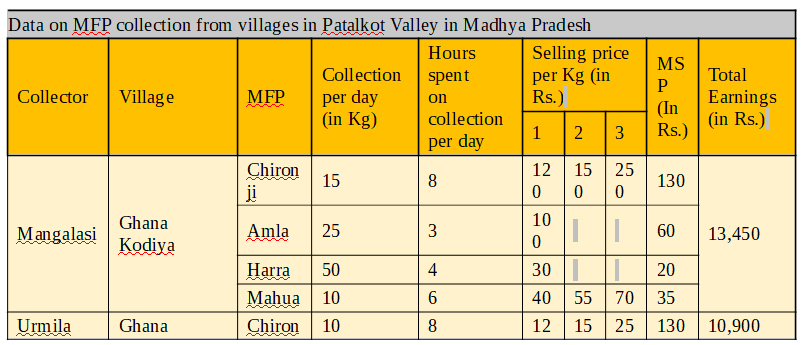
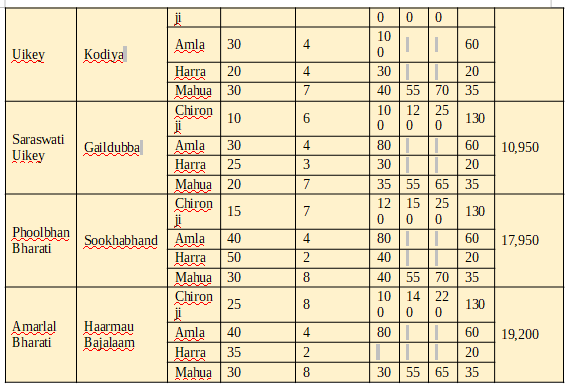
While the market price for the produce in the beginning of the season quoted by collectors was the lowest and often close to the MSP, it was reported that as the season proceeds the prices for the produce increase as a result of competition in the market. This is reflected in the increasing selling prices of Chironji and Harra towards the middle and end of the season.
It was reported by MPVS that none of the collectors surveyed had the knowledge of the MSP set by the government for their respective produce. Azad explained, “The small traders that buy MFP produce from adivasi collectors in the villages inquire about the MSP and offer a price slightly above the MSP to the collectors. Unaware of the MSP themselves, the collectors end up selling their produce to these traders as they do not have the wherewithal to store the produce and sell it on a later date. Most often, they are in urgent need of money at the time of collecting and selling MFP.”
While the selling price of Mahua ranged between Rs. 30 and Rs. 70 per kg, all the collectors reported (via MPVS) purchasing it at Rs. 90 per kg for private consumption after the season was over.
The fact that private traders are paying prices above the MSP for MFP indicates that the MSP set by the government agencies is merely the floor price of this produce and the market worth of these MFP is actually much higher than the MSP. Since the prices offered in the market are higher than MSP, the collectors end up selling all their produce in the open market. This makes the exercise of declaration of MSP by the government redundant.
The pandemic and the ensuing lockdowns during the peak season for MFP collection and trading has made an already precarious situation much worse for MFP collectors. In response to this, Chief Minister of MP, Shivraj Singh Chauhan, had announced an increment in MSP of several MFP in April 2020 and assured that in the hour of COVID-19 crisis, procurement of forest produce will provide relief to forest dwellers. MSP of prominent MFP like Mahua, Chironji, Lac, Harra, Honey, Sal etc. were increased.
However, no data is available to check if these measures provided any relief to MFP collectors in the previous and ongoing season. In absence of government procurement of MFP other than nationalised MFP (Tendu leaves, Kullu gum and Sal seed), an increase in MSP does not directly benefit the collectors.
The final column ‘Total Earnings’ reflects the total earnings made by collectors assuming that they collected the four commodities – Chironji, Harra, Mahua and Amla – on the given days at the given rates. In such a scenario, the total earnings of the collectors ranged from Rs. 10,900 to Rs. 19,200. Even if we are to assume that a collector spends twice as many days in an entire season (a maximum of 20-25 days for most of these commodities), the maximum a collector can earn in the entire season will be less than Rs. 40,000.
It has to noted that this is the annual earnings of the collector from collecting and selling MFP. This comes down to monthly earnings of a little above Rs. 3,000.
Meagre annual earnings are the reason that collecting and selling MFP is only a subsidiary source of income for the adivasi population in MP. Other sources of income include agriculture, animal husbandry and forms of wage labour – agricultural labour, construction work etc. A number of them end up migrating to cities to find other sources of income.
Given that MSP for MFP is more like floor prices for these products, the annual earnings of the collectors from selling MFP can be increased by – 1. Increasing the MSP for MFP and 2. expanding and increasing procurement of MFP by the government.
To further ameliorate their incomes, the government can establish value addition centres for MFP produce and connect the collectors with these centres. This will also benefit the consumers for whom processed products such as honey, millets, and other medicinal products will be able at more reasonable prices.
Get the latest reports & analysis with people's perspective on Protests, movements & deep analytical videos, discussions of the current affairs in your Telegram app. Subscribe to NewsClick's Telegram channel & get Real-Time updates on stories, as they get published on our website.











